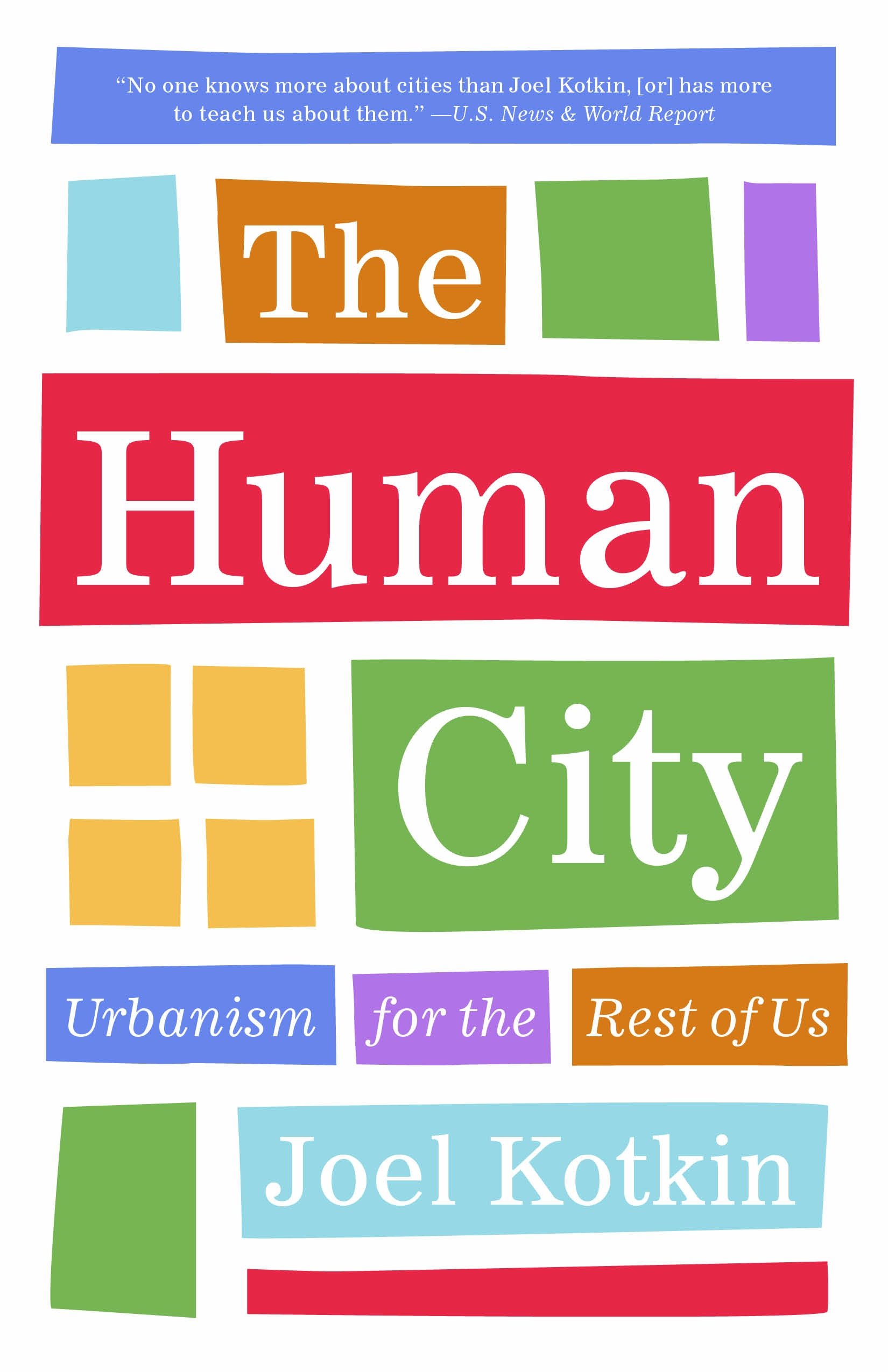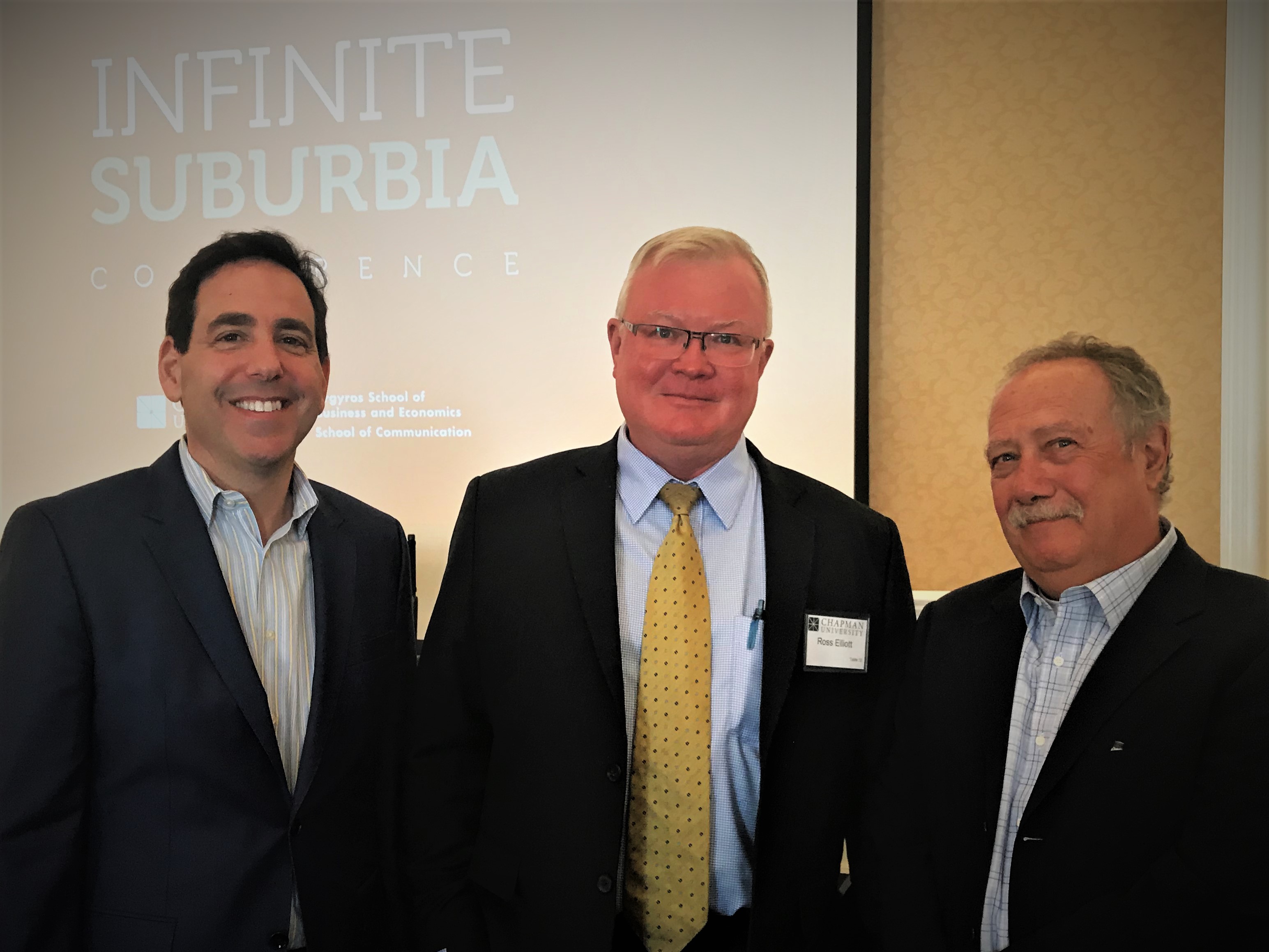What is the future of suburbia? Co-editors Alan M. Berger, Joel Kotkin, and Celina Balderas Guzman collaborated with a network of artists, researchers, theorists and students to examine emergent trends of suburban design and development around the world.
Infinite Suburbia is the culmination of that study, presenting 52 essays by 74 authors from 20 different fields, including design, architecture, landscape, planning, history, demographics, social justice, familial trends, policy, energy, mobility, health, environment, economics, and applied and future technologies.
This exhaustive and groundbreaking compilation is the definitive statement on suburbia at the beginning of the 21st century.
The Urban Developer regular contributor Ross Elliott recently attended a conference on the future of suburbia in California, interviewing the two leading urbanists behind Infinite Suburbia.
Alan Berger will feature as the international keynote speaker at “The Future of Suburbia” conference held in April.
Related reading: Urban Renewal in Australia, What’s Next?

Described by the New York Times as “America’s uber-geographer”, Joel Kotkin is an internationally-recognised authority on global, economic, political and social trends. His new book, The Human City: Urbanism for the Rest of Us, was recently published by Agate Press.
Joel is the Presidential Fellow in Urban Futures at Chapman University in Orange, California and Executive Director of the Houston-based Center for Opportunity Urbanism.
Alan Berger is Professor of Landscape Architecture and Urban Design at Massachusetts Institute of Technology where he teaches courses open to the entire student body.
He is founding director of MIT's P-REX lab, a research lab focused on environmental problems caused by urbanization, including the design, remediation, and reuse of waste landscapes worldwide. He is also Co-Director of MIT Norman B. Leventhal Center for Advanced Urbanism (LCAU).

Q: You each come from quite different backgrounds. How did you both connect and what was it about suburbia that brought you together for this project?
Alan: A while back I read Joel’s book “The Next Hundred Million: America in 2050” and it struck a chord. I have been studying “future” ideas of suburbia for more than a decade.
Futurism is a long-lost form of art, especially in the urban planning and landscape architecture fields, which are basically just reactive fields today. Looking out 40-50 years requires a certain type of outlook and affinity to make the future better for humankind, which we both deeply share.
Joel: My background was primarily New York-centered, but my parents moved to Long Island when I was five. My parents instilled a great respect for the city, but made it clear why we moved – affordability, good schools, safety.
I never thought I should categorically deny to others what my parents, and later in life, I also sought out, first in Los Angeles and later in Orange County.
Q: Alan, how did your academic and industry colleagues in the architecture and urban planning fields react when you told them of your interest in the future of suburbia?
Alan: When I shared my idea for this book the consensus was: “Why would you do a book on suburbia?” This was followed by suggestions that I should not even use the word “suburbia” in a book title.
After selling out the book in the first 4 days, and winning coveted awards in the first few months, I can look back and laugh. I think those folks assumed our book with be loaded with the same tired binary polemics (urban vs. suburban) omnipresent in the academy and governments alike.
Now that the book has been very well-received, there’s genuine new interest and support for the book and its balanced messages about creating new types of sustainable suburban forms.

Q: Joel, Infinite Suburbia was launched late last year and promptly sold out, with a second edition on its way. Did you expect that level of interest and what’s been the feedback you’ve received on the project?
Joel: The feedback has been very good, which is somewhat of a surprise. But it also reflects the reality that the planning community, and their allies in academia, media and the real estate community, simply are not going to take us on. It is easier to ignore us than deal with our arguments since they after all possess the truth and dominate the means of communication.
Q: Joel, you have written several books about cities, urban planning democratisation of wealth that suburbia allowed but your observations haven’t always been welcomed. What has to change before the possibilities of suburbia gain wider professional interest and policy support?
Joel: Simply put, suburban interests, which are the vast majority, need to reach a level of consciousness where they actually fight back. We are seeing some reevaluation in the more open-minded media, like the Wall Street Journal or 538.com, which have seen the numbers and begun to understand that the massive "back to the city" wave has been vastly over-exaggerated.

Q: Alan, at the “Infinite Suburbia” conference in Irvine in late February you shared some futuristic thinking about how suburbia might look in 40 years’ time. What are the biggest drivers, in your view, that will take us toward that future?
Alan: In Irvine I discussed the GHG/Carbon conundrum that is driving policy toward growth control restrictions based on biased and skewed readings of the scientific arguments. The reality is that there is very little evidence to prioritize one type of urban form over another if your goal is to significantly reduce GHG. Many studies show that the use of “density” as a silver bullet is a very poor policy lever and does not increase sustainability on many levels. A more promising approach is to deploy cheap efficiency innovations that will actually reduce GHG sooner.
If we spend now on retrofitting building energy technologies and preparing for the PV-electrified autonomous car, we will get closer to major GHG reduction sooner than if we force people into homogenous smart growth models. By the way, affordability is also improved.
Q: Alan, you’re coming to Australia for a conference in April this year in Brisbane. What are the key messages do you think that Australian developers, planners, designers and the property industry generally will gain from your keynote address?
Alan: Start preparing for the Gen Y, and Gen Z onslaught of homebuyers who do not want to live in homogeneously manufactured higher density clusters, but rather want a new type of green, sustainable suburban living that is not yet imagined. Megacities are not in the future for Millennials, who, rightly so, disdain this dystopian vision of urbanity.
While I intend to share the key messages from our book, Infinite Suburbia, I hope your audience comes away with a deeper appreciation for the role suburbia can play in making the entire metropolitan enterprise more sustainable and equitable.


Ross Elliott is Regional General Manager for property & infrastructure consultants, APP. He has 30 years’ experience in the industry and has worked in leading national advocacy roles for the industry along with advising a large number of businesses active in the sector.
An author, speaker and public policy analyst, he was last year published in a global study into suburbia by MIT and Chapman University (USA) entitled “Infinite Suburbia.”















